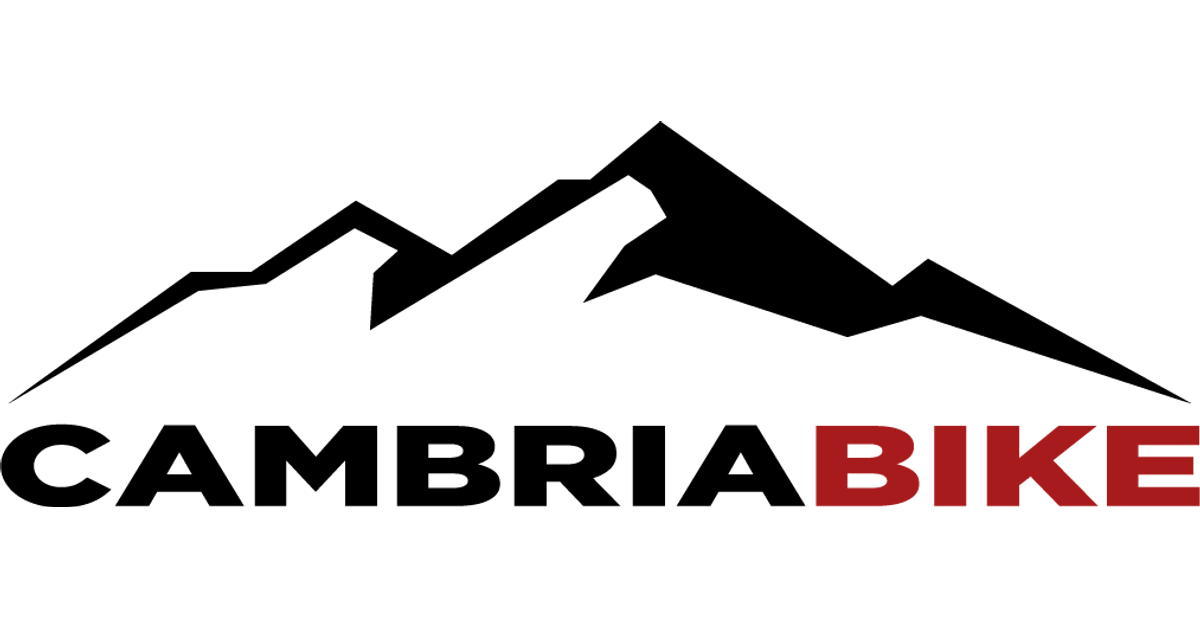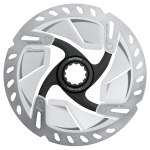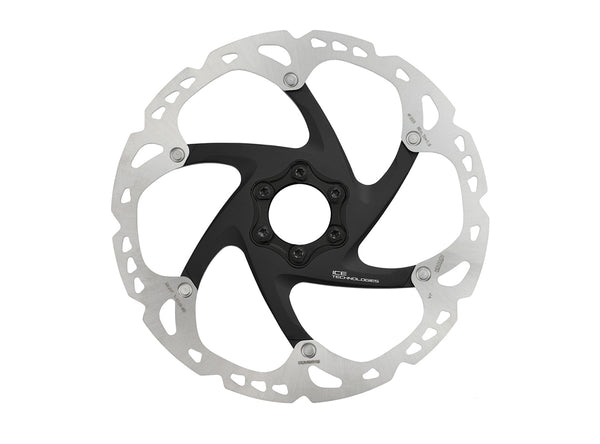Retrorockit
1 kW
OK they're Aluminum clad with Stainless steel faces, But Shimano is claiming 100*C temperature reduction with the basic version, and 140-150*C with ones featuring exposed cooling surfaces. They come in traditional sizes, and 6 bolt and Center Lock.
Thermal conductivity is 215W/mK for Aluminum, and 17W/mK for Stainless Steel so this may actually be true. Sending the heat away before it gets to the pads and calipers looks good to me.
Here is the Shimano page with the basic ICE Technolgy brake rotors. $50-$60 The graph looks like they reject heat at the same rate it's being applied.

 bike.shimano.com
Here is the page with the high end exposed cooling fin versions. Called FREEZA. Close to $100 for big ones. Comparison chart between 4 types of rotors.
bike.shimano.com
Here is the page with the high end exposed cooling fin versions. Called FREEZA. Close to $100 for big ones. Comparison chart between 4 types of rotors.

 bike.shimano.com
bike.shimano.com
I've ordered a pair of ICE rotors in 203mm and 180mm for my BBSHD to run with Avid BB7s and metallic pads with Jagwire Elite cables.
RT86 is the basic ICE rotor, RT76 is a standard SS rotor with an alloy spider. They look similar.
Thermal conductivity is 215W/mK for Aluminum, and 17W/mK for Stainless Steel so this may actually be true. Sending the heat away before it gets to the pads and calipers looks good to me.
Here is the Shimano page with the basic ICE Technolgy brake rotors. $50-$60 The graph looks like they reject heat at the same rate it's being applied.

ICE TECHNOLOGIES | SHIMANO BIKE COMPONENT | SHIMANO BIKE-EU
To Build Closer Relationships between People, Nature, and Bicycles. We believe in the power of cycling to create a better world as we move forward. We inspire all people to enjoy our products in their everyday lives and where they take them.

ICE TECHNOLOGIES FREEZA | SHIMANO BIKE-EU
To Build Closer Relationships between People, Nature, and Bicycles. We believe in the power of cycling to create a better world as we move forward. We inspire all people to enjoy our products in their everyday lives and where they take them.
I've ordered a pair of ICE rotors in 203mm and 180mm for my BBSHD to run with Avid BB7s and metallic pads with Jagwire Elite cables.
RT86 is the basic ICE rotor, RT76 is a standard SS rotor with an alloy spider. They look similar.





